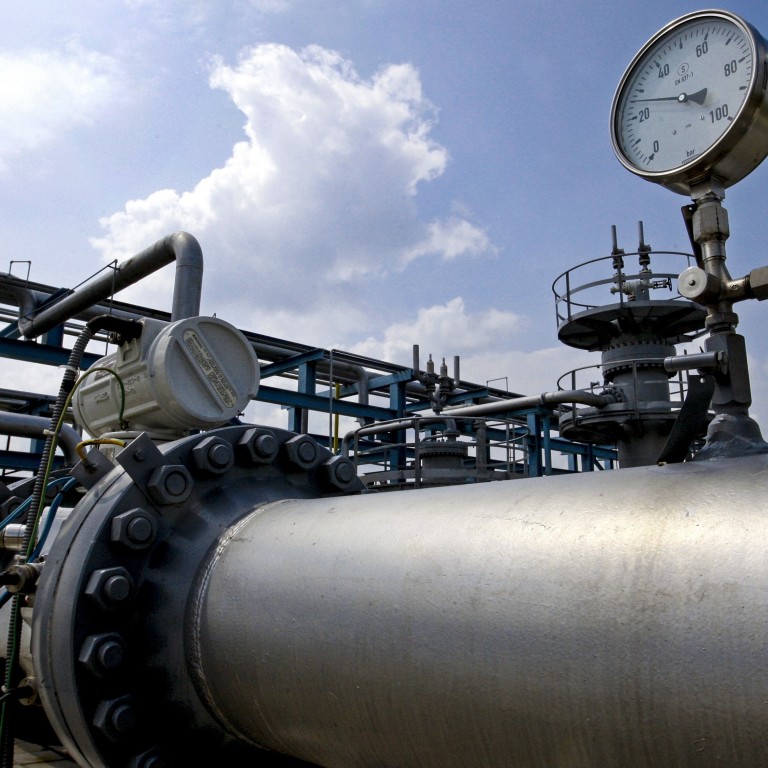
Bulk of China’s tightened belt and road energy finance goes to Africa
- Despite dropping to their lowest level since 2008, Chinese loans to the sector topped US$4.6 billion in 2020
- Projects in African countries accounted for two-thirds, with the biggest share going to Nigeria’s gas pipeline project
No evidence of China’s ‘debt-trap diplomacy’, researchers and analysts say
Nigeria received more than half of the amount that China’s policy banks – China Development Bank (CDB) and Export-Import Bank of China (Exim Bank) advanced last year.
The latter also financed hydropower projects in Ivory Coast (US$286 million) and Rwanda (US$214 million), as well as a solar project in Lesotho (US$70 million).
But after peaking in 2013, Chinese lending has been flat or declining thanks to a more cautious and calculating approach. According to Boston University’s Global Development Policy Centre, lending by China Development Bank and Exim Bank fell to US$3.9 billion in 2019, from a high of US$75 billion in 2016.
China turns cautious on lending to Africa amid default crisis fears
The university researchers said that despite the contraction in energy financing, CDB and Exim Bank still provided about the same level of energy finance as the World Bank in 2020. Their data show the two banks have provided US$245.8 billion to the sector since 2000.
The lenders provided eight loans to eight countries: Nigeria, Ivory Coast, Rwanda, Lesotho, Bangladesh, Pakistan, Cambodia and Serbia.
The study said US$192.5 billion, or 78 per cent, of CDB and Exim Bank of China total overseas energy finance had been directed to belt and road countries. It also noted that finance in the power generation sector remains dominated by hydropower and coal, except for the solar power project in Lesotho.
The researchers said China’s overseas development finance in the energy sector had been on a downward trend since 2016, likely due to both lower external demand for borrowing and greater domestic discretion for lending.
“As the pandemic wreaked havoc globally on business activities, energy demand decreased and countries approached debt ceiling levels, a contraction in China’s overseas development finance was to be expected,” they said.
Kevin Gallagher, professor of global development policy at Boston University, said the Covid-19 pandemic had made it harder to make large energy and infrastructure deals which take time and contact to structure, but the trend had started well before, in 2017.
According to Gallagher, this was due to a combination of factors in China and some borrowing countries. But a key reason was the trade war started by former US president Donald Trump, which triggered uncertainty in China,” he said.
“That is compounded by the availability of dollars in China (these loans are dollar-denominated). The current account surplus was close to 10 per cent in the early 2000s and has just been over 1 per cent. Thus, China is holding on to dollars in case it needs to weather external and internal shocks.”

02:06
Chinese cash funds African coal plants despite environmental concerns
In terms of borrowing countries, Gallagher said many had ‘maxed out’ on their ability to borrow. Some of the leading borrowers in Angola, Argentina, Ecuador, Pakistan, and Venezuela were undergoing high levels of debt distress, in many cases under IMF programmes.
Secondly, Gallagher said many “local, national, and global players have pushed back on Chinese loans for their limited level of social and environmental safeguards, making it slower and harder to cite projects”.
In South Asia, Bangladesh received a US$970 million concessional loan for a national power grid network upgrade, the materialisation of a primary deal signed during Bangladeshi Prime Minister Sheikh Hasina’s visit to China in 2019.
Security fence at Gwadar port creates new tensions for China, Pakistan
In Europe, Serbia received an Exim Bank of China loan of US$214 million to build a district heating system for Belgrade. In Southeast Asia, Cambodia received another concessional loan – US$80 million – for the seventh phase of its rural power grid extension project, all of which has been financed by Exim Bank of China.
Deborah Brautigam, a professor of international political economy at Johns Hopkins University and founding director of the China Africa Research Initiative, attributed the drop in lending from Chinese financiers to low commodity prices, starting in 2014-15, that created concerns among China Eximbank that borrowers would have trouble repaying their loans.
“Ironically, the announcement of the Belt and Road Initiative in 2013 was the peak in Chinese project lending in Africa,” she said.
Brautigam identified two further trends: “a shift toward encouraging more FDI rather than loan capital, and a greater role for commercial banks and instruments such as syndicated loans”.

